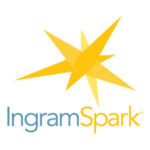
I just received this transcript from Daniel Hall of my interview with him. I thought the info might be of use to many of you.
Today we are going to discuss how your eBook and your print book can make you a great deal of money in the library market.
It is counter-intuitive because people think that libraries are old fashioned and places people used to go. Not true. Libraries are where it’s at, and we can make a lot of money there.
The Book Industry Study Group put out a study with Nielsen BookScan recently saying that avid readers, which is the type of consumers that book authors and publishers want to go for, avid readers visit libraries. Also, their households buy, on average, nine books a month. They’re in libraries and they are buying nine books a month, on average; a lot of them buy more. With that, combined with the fact that a lot of libraries are in the United States, it’s the perfect place to focus your marketing and your sales efforts.
Step 1 – Make Sure Your Book Belongs In A Library
The first “Big Picture” step is to make sure that your book belongs in a library. If you’ve written a mystery novel, a sci-fi novel, a cookbook, a self-help book, a business book, you belong in libraries. If you’ve written a journal, a coloring book, a word search, those probably aren’t good library books because libraries can’t take what we call consumables.
Make sure that you have the kind of book that belongs in a library, and make sure it’s priced right. Is every other book in your genre $17.99 and yours is $24.99? Get your book in line with your competition. The next step, after that, is to get your book into the wholesalers.
Step 2 – Get Your Book Into the Wholesalers
Libraries buy from wholesalers. Wholesalers are just big warehouses that will buy books from you, the author or publisher and turn around to resell them to libraries. The next step is to present your book to the librarians so that they can order the book from the wholesalers. My favorite step, the one after that, is when wholesalers pay you because the libraries have paid them, and then the libraries start reordering your book.
So, make sure your book is ready for the library and that it belongs there, get your book into the wholesalers, the appropriate wholesalers. Pitch your book to the librarians, get them to put it on the shelves. Then wait for the sales to come rolling in.
If your book does well in one library, other librarians are going to hear about it, and they are going to start ordering your book too. That’s the really cool thing about this because there is a sort of viral nature to the buying of books within the library system.
Selling eBooks to Libraries
My favorite thing about selling eBooks to libraries is that you get to charge a lot of money for them. You may sell  your eBook on Amazon for $8, $9, or maybe even $10. You can sell that same $9 eBook to a library for $30 or $40 because they are going to loan it out. They are going to loan your book out, over and over again, to their patrons, but only one at a time.
your eBook on Amazon for $8, $9, or maybe even $10. You can sell that same $9 eBook to a library for $30 or $40 because they are going to loan it out. They are going to loan your book out, over and over again, to their patrons, but only one at a time.
Eventually, if you sell enough copies of your eBook, you then have the demand you need to start licensing them. That means you sell them, in essence, the right to loan out your eBook for one year, or for a certain number of loans. That means every year, you get more money because those loans are re-upped, those licenses are renewed.
And yes, if you get your book into one library in Los Angeles, which has a $25 million dollar a year budget, and the other dozens and dozens of Los Angeles libraries can see how well your book is doing, they’re going to start ordering it. But, what if they see that you have an eBook? What if you told them that you have an eBook? All it takes is a simple email, and all of the sudden, you’ve doubled your sales. In some cases, you have tripled and quadrupled them.
How To Make Your Book Library Ready
 I know these steps intimately because we cover them in our course. I mean, these are the steps that we actually walk through in the course. However, when I said to make sure that your book is ready for libraries, there’s an entire list of things that your book should have. One of them is a catalogue and publication block. This is a block of information, of data, codes, numbers, and categories that all go into a small space that sits on the back of your title page, also known as the copyright page.
I know these steps intimately because we cover them in our course. I mean, these are the steps that we actually walk through in the course. However, when I said to make sure that your book is ready for libraries, there’s an entire list of things that your book should have. One of them is a catalogue and publication block. This is a block of information, of data, codes, numbers, and categories that all go into a small space that sits on the back of your title page, also known as the copyright page.
If you would like to get into libraries, this chunk of data is very helpful because it shows the librarians that you mean business. That you understand their business and what they need from you in order to get your book into their system.
When we say, “Make sure your book is ready,” there’s a long checklist of things you may not have actually heard of, and our course covers that. It’s the catalogue and publication block. We teach you how to price your book. What’s the right trim size? We’ve got an enormous discussion going on right now among all of our students about why 6×9 is not a great trim size for most books, not all, but for most.
What you do is you get your book ready. If your book’s already printed and ready to go, you compare it to what the marketplace needs. You’ll learn these things in our course. When your book’s ready to go, registering with the wholesalers is as simple as writing a cover letter, sending them a copy of your book, with a marketing plan.
Wholesalers want to know that you’re going to create demand. Are you going to be calling 40 libraries a week? Well, then tell them that. Are you going to be doing radio interviews or podcasts? Are you going to be writing guest posts as a blogger? If you tell the wholesaler what your marketing plan is, you have a much better chance of getting in there.
The wholesalers are going to ask for a very deep discount. In some cases, this will be 50-60% off the price of your book. And, they are going to want to buy the returnable. If a wholesaler, such as Ingram Wholesale, Baker and Taylor Wholesale, Broder Wholesale, Bookazine buy 40 copies of your book, and only 20 sell, they are going to send you the other 20 back.
So, you’re in the wholesalers now, you’ve agreed to their terms, they’ve ordered a few copies, and now it’s time to write your cover letter for the libraries. The cover letter does not focus on how wonderful you are or how terrific your book is. Although you probably are wonderful and your book is great, your letter is focused on what the librarians want to hear and what they need to know.
What they need to know is that you understand their goals. If you approach a librarian and say, “Hey, I understand your goals, I know how hard your job is, and I’m here to make it easier,” you are so in. You want to create a cover letter, or start a communication email chain with them that says, “I know you want to create foot traffic. I know that you only want to bring in books that you need, the category is right for you, that your patrons are looking for. My book is exactly the kind of book that your patrons are looking for.
How do I know that? Well, because I took this course and Amy told me that self-help books were #3 for non-fiction and cookbooks were #1. Well, my book is a self-help cookbook, so you clearly need my book. It’s priced perfectly, it’s got a category and publication block. It’s available at the following wholesalers. I also have an eBook available at the following eBook wholesalers.”
I’ve been mentioning the print book wholesalers, but don’t forget the eBook wholesalers, like Overdrive and 3M. IngramSpark has a good one, or you can even use some of the eBook distributors like Bookbaby or Smashwords. So, once you’re in and once you’ve created that cover letter, and you start sending it out to emails, I suggest spending 15-20 minutes a day…that’s it…5 days a week, 20 minutes a day, for about 90 days, should really get you going, sending out this cover letter and tweaking it for each librarian.
Example Cover Letter
“Dear Susan, My name is Amy. I’ve written a book about the publishing industry. I’m hoping that you will consider stocking it on your shelves.” And then, you go on from there, “Here’s my marketing plan. Here’s what I know about your library. I would love to send you a copy as a PDF for you to review. May I send you a copy?” Just start with that.
Communication With Librarians
Librarians are lovely. They are so nice. They are going to start communicating with you. As we get into the nitty- gritty on exactly how to do this, there’s also a long list of things not to do. You do not pick up the phone and call a librarian at noon on Saturday and expect them to give you half an hour. They aren’t going to. They are going to be annoyed; they’re busy.
gritty on exactly how to do this, there’s also a long list of things not to do. You do not pick up the phone and call a librarian at noon on Saturday and expect them to give you half an hour. They aren’t going to. They are going to be annoyed; they’re busy.
You do not call a school library and ask them to spend $400 on your book. They don’t know you, and they don’t have that kind of budget. School libraries are different than public libraries; they depend a lot on donations. If you really want to be focused on the school library market, that’s a slightly different cover letter. Again, we cover a lot of that in our course.
What you want to do is to keep going after the libraries that want your book. You may hit a spade of libraries that aren’t interested because the category isn’t right for them. Yes, you have a self-help cookbook, and yes, that’s a huge market for libraries right now, in the print book world and the eBook world. But, what if that particular library system is just stuffed with self-help cookbooks? What if they don’t need anymore?
That’s okay. There’s almost 13,000 public libraries in the United States. Go find others. Just start sending out your emails. Twenty minutes a day. You will eventually start enough conversations, and those orders will start coming in. Eventually, you will start seeing residual and viral sales. Things will start to snowball. Things will start to grow.
Tips On Getting Into the Library Market
For those of you who would love to hit the library market, but you don’t have the time–I’ve always said, “When you need to sell a book…time, money, talent…pick any two.” If you’ve got time and money, but no talent, you can still be very successful. If you’ve got money and talent, but no time, you’re golden.
If you don’t have enough time, but you have a great book, you might want to consider using some of our advice and hiring someone to do this for you. Examples: a local college kid, your nephew, your grandson, etc. It should be someone that’s email friendly.
You can hire a virtual assistant. I take out ads on Craigslist all the time. There are ways to hire somebody else to do this for you in a way that still is very profitable. Libraries are profitable enough that if you don’t have that 20 minutes a day, 5 days a week, maybe somebody else does. You should consider training someone how to do it. It is very transferable.
Connecting With Amy
You can actually view the webinar about our library training. If you like what you’ve learned today, and you really want to get more into it, check that video out. I’m very, very proud of the work that Daniel Hall and I did on that. Also, if you need to reach me, I’m always reachable atInfo@NewShelves.com or on my website, NewShelves.com. You don’t have to implement any of this, but if it resonates with you, then you should absolutely take the time and energy to actually start using what you’ve learned today.

Daniels Real Fast Results Tips: Getting Into Libraries
Resources:
Daniel And Amy’s Course:
Real Fast Library Marketing
Wholesalers:
Ingram Wholesale
Baker and Taylor Wholesale
Brodart Library Wholesale
Bookazine









 “Hello, New Shelves Books, How may I help you?”
“Hello, New Shelves Books, How may I help you?”
 your eBook on Amazon for $8, $9, or maybe even $10. You can sell that same $9 eBook to a library for $30 or $40 because they are going to loan it out. They are going to loan your book out, over and over again, to their patrons, but only one at a time.
your eBook on Amazon for $8, $9, or maybe even $10. You can sell that same $9 eBook to a library for $30 or $40 because they are going to loan it out. They are going to loan your book out, over and over again, to their patrons, but only one at a time. I know these steps intimately because we cover them in our course. I mean, these are the steps that we actually walk through in the course. However, when I said to make sure that your book is ready for libraries, there’s an entire list of things that your book should have. One of them is a catalogue and publication block. This is a block of information, of data, codes, numbers, and categories that all go into a small space that sits on the back of your title page, also known as the copyright page.
I know these steps intimately because we cover them in our course. I mean, these are the steps that we actually walk through in the course. However, when I said to make sure that your book is ready for libraries, there’s an entire list of things that your book should have. One of them is a catalogue and publication block. This is a block of information, of data, codes, numbers, and categories that all go into a small space that sits on the back of your title page, also known as the copyright page. gritty on exactly how to do this, there’s also a long list of things not to do. You do not pick up the phone and call a librarian at noon on Saturday and expect them to give you half an hour. They aren’t going to. They are going to be annoyed; they’re busy.
gritty on exactly how to do this, there’s also a long list of things not to do. You do not pick up the phone and call a librarian at noon on Saturday and expect them to give you half an hour. They aren’t going to. They are going to be annoyed; they’re busy.
 A few years back, authors and small presses could participate in a number of marketing programs at Amazon.com.
A few years back, authors and small presses could participate in a number of marketing programs at Amazon.com. Funny, sharp, and smart, Amy Collins is full of up-to-date industry tips and executable advice. She has been a Book Buyer for a chain of bookstores as well as a Sales Director for a large books and magazine publisher. Over the years, she has sold to Barnes & Noble, Target, Costco, Airport Stores, Books-A-Million, Wal-Mart, and other major chains. She helped launch several hugely successful private label publishing programs for Borders, PetSmart, and CVS. In 2006, Amy started
Funny, sharp, and smart, Amy Collins is full of up-to-date industry tips and executable advice. She has been a Book Buyer for a chain of bookstores as well as a Sales Director for a large books and magazine publisher. Over the years, she has sold to Barnes & Noble, Target, Costco, Airport Stores, Books-A-Million, Wal-Mart, and other major chains. She helped launch several hugely successful private label publishing programs for Borders, PetSmart, and CVS. In 2006, Amy started  D5 Creation
D5 Creation